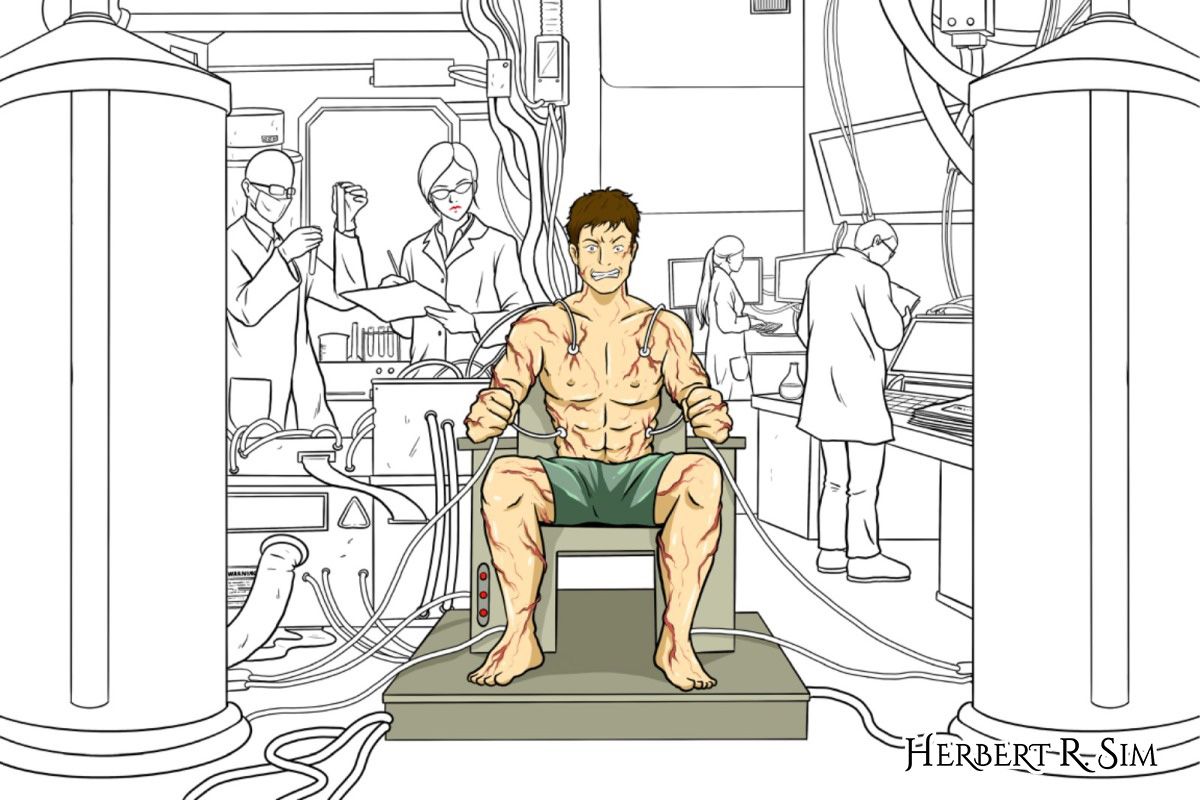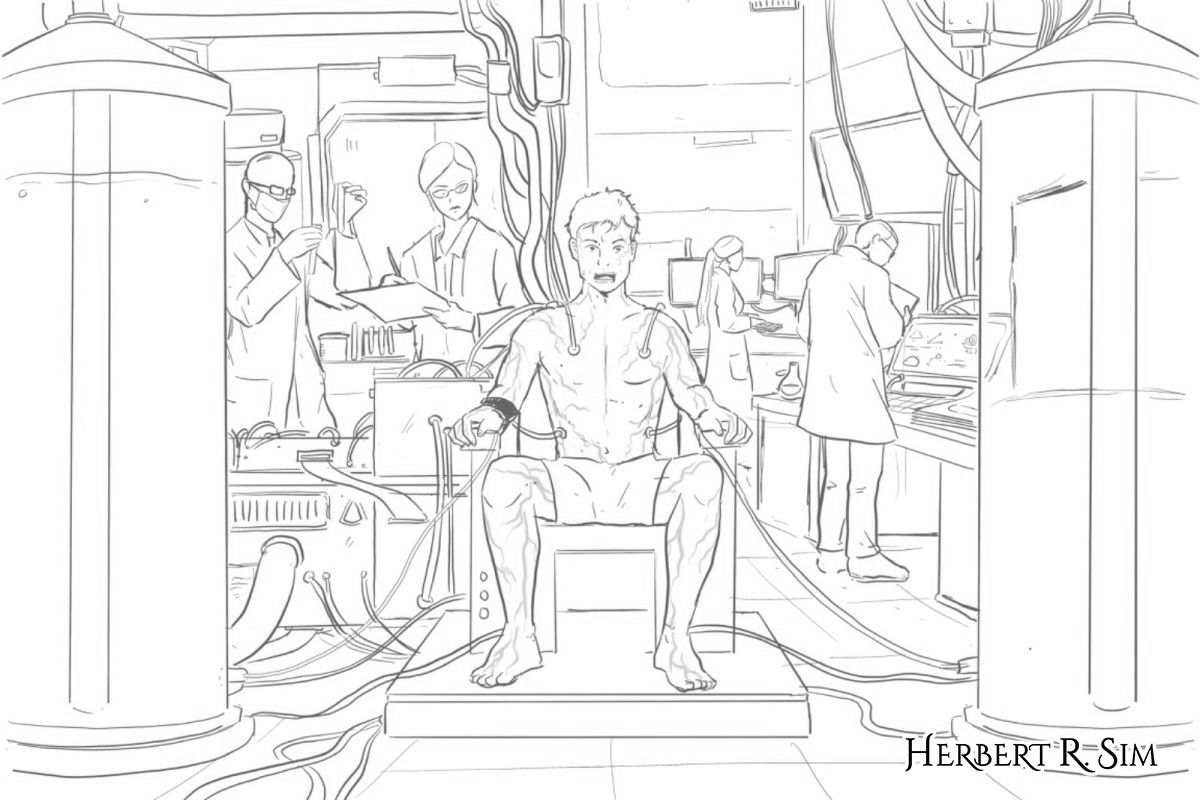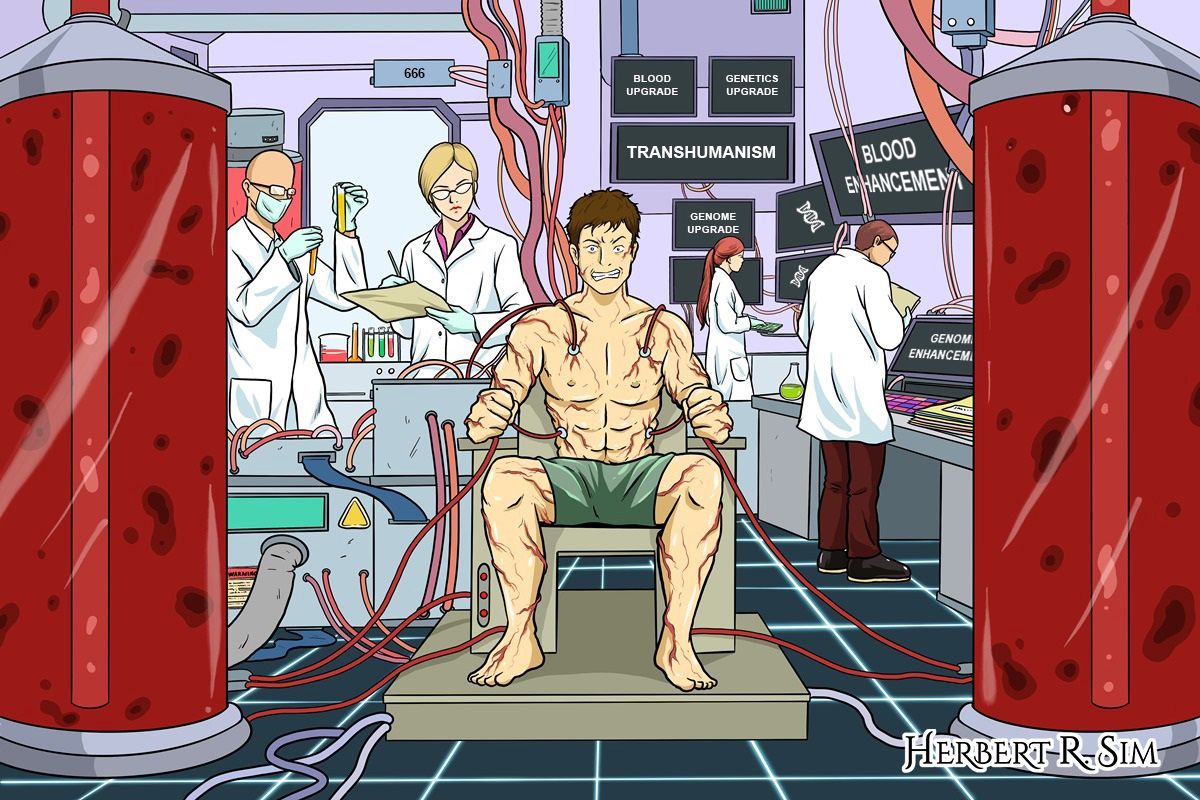
In my illustration of “Transhumanist Vision – Genetic Enhancement through Blood Upgrading”, I draw reference from Wolverine being upgraded with adamantium in a laboratory, from the X-Men Origins Wolverine (2009) movie scene.
————————————————————-
As technology continues to evolve at breakneck speed and alters the way we live our lives, the realm of genetics has also been making giant strides.
Imagine a future where your intelligence, strength, and endurance can be amplified through genetic enhancements, giving you the edge that you’ve always wanted and to satiate that innate appetite for victory. This idea, also known as transhumanism, aims to enhance our human capabilities with the help of modern scientific advancements.
Specifically, the potential of using blood as a key element in genetic enhancement, with its broader implications for transhumanism, has been a highly intriguing, yet seemingly viable one.
The role of blood in genetic upgrades
Blood is a complex biological fluid that carries vital nutrients and oxygen to every cell in the body. It comprises more than just red and white blood cells, including platelets, plasma, and various proteins. Equally vital is its role in gene expression, cell communication, and overall biological function. As such, blood presents a natural entry point for scientists to leverage within their array of genetic enhancement strategies.
Gene therapy, for example, is a technique that involves the insertion or modification of genetic material within an individual’s cells to treat or prevent disease. In fact, several gene therapy approaches have been developed to date, targeting blood cells and their components for genetic enhancement in various forms and for different results.
Elevated athletic performance
Studies have shown that manipulating EPO levels through gene therapy can lead to significant improvements in athletic performance. EPO is a hormone that stimulates the production of red blood cells, increasing the oxygen-carrying capacity of the blood. For instance, researchers at the University of Pennsylvania successfully used a modified virus to deliver the EPO gene into mice, leading to increased red blood cell production and improved endurance.
Enhanced strength
Apart from the focus on EPO, scientists have also been studying myostatin, a protein that regulates muscle growth. By inhibiting myostatin, researchers at the Johns Hopkins University School of Medicine have been able to demonstrate that blocking myostatin in mice can lead to a significant increase in muscle mass – sparking interest in the experiment’s potential application for genetic enhancement of strength.
Reversing vision
Reversing certain types of vision loss has always been on the cards. A recent study published in the journal Nature Medicine reported successful results in using gene therapy to treat a rare form of inherited blindness called Leber congenital amaurosis. Researchers, in this case, used a harmless virus to transfer a healthy copy of the affected gene into the patient’s blood cells. The treated cells were then re-injected into the patient, resulting in considerable visual improvements.
Immune system upgrade
Immune system manipulation is another interesting route in blood-based genetic improvement. By altering the genetic makeup of white blood cells, researchers can potentially enhance the body’s natural defenses against diseases and infections. For example, a study by the National Institutes of Health (NIH) found that gene therapy can be used to boost the immune response in patients with severe combined immunodeficiency (SCID), a rare genetic disorder that affects the immune system.
Improved learning
Neurotrophin gene therapy, which improves cognitive enhancement, has also become an approach that has received particular interest. Neurotrophins are proteins that are essential for neuron growth, development, and survival. Researchers from the Salk Institute discovered that overexpression of the brain-derived neurotrophic factor (BDNF) gene in mice resulted in considerable increases in learning and memory. This shows that gene therapy targeting neurotrophins could unleash the potential for enhanced intelligence.
————————————————————-

In my illustration sketch, you can see the giant chemical tanks, connected with tubes to the test subject, of which has all his veins popping out, very obvious.
————————————————————-
Ethical considerations and regulation
While the prospect of blood-based genetic improvements is intriguing, it also presents substantial hurdles and ethical considerations.
Several safety concerns have been raised about gene therapy, including immunological reactions, off-target consequences, and the possibility for malignancy. The prospect of genetic enhancement also raises complex ethical questions, such as the potential for creating a divide between genetically enhanced individuals and those without access to these technologies. There is also the possibility of creating a competitive climate in which people are pushed to undergo genetic alterations in order to stay ahead. Concerns regarding eugenics and the potential exploitation of genetic technologies for evil must also be properly explored.
As genetic enhancement technologies advance, it is essential to establish regulations and policies that govern their use. This includes determining the acceptable limits of enhancement, ensuring equitable access to these technologies, and monitoring their long-term societal impacts. The development of international guidelines and standards will be crucial in ensuring that responsible and ethical applications of genetic enhancement technologies are being made.
What does the future hold for a transhumanist vision?
Transhumanism predicts a future in which human limits are overcome via the use of advanced technologies. Genetic enhancement, particularly blood modification, offers a viable approach towards realising this ideal. The ability to unlock superpowers like as greater intelligence, strength, and endurance has the potential to revolutionise the human experience, offering up new avenues for exploration, creativity, and invention.
One exciting possibility for blood-based genetic enhancements is the development of treatments for age-related diseases such as Alzheimer’s, Parkinson’s, and other neurodegenerative disorders. By targeting specific genes and proteins in the blood, scientists may be able to delay or even reverse the aging process.
Furthermore, blood-derived stem cells have the potential to reshape regenerative medicine, armed with the perceived ability to repair or replace damaged tissues and organs – a rather effective function that may lead to a plethora of therapeutic uses. The advancement of these technologies can significantly impact the future of healthcare, paving the way for new treatments and improved quality of life.
Despite what may seem like a difficult journey ahead, continued research and development, coupled with a thoughtful examination of the ethical implications, will be crucial in determining the role of blood-based genetic enhancements.
Blood remains an essential component of human biology and presents a natural pathway for genetic enhancement strategies. From athletic performance to cognitive abilities, blood-based gene therapies hold the potential to unlock superpowers and contribute to the transhumanist vision of transcending human limitations.
As we continue to explore the potential of blood in genetic enhancement, we must strive to ensure that these technologies are developed and applied responsibly, paving the way for a future that benefits all of humanity. By fostering open dialogue, ensuring robust ethical oversight, and promoting equitable access, we can harness the revolutionary potential of blood-based genetic enhancement and move closer to realising the transhumanist goal.
————————————————————-

